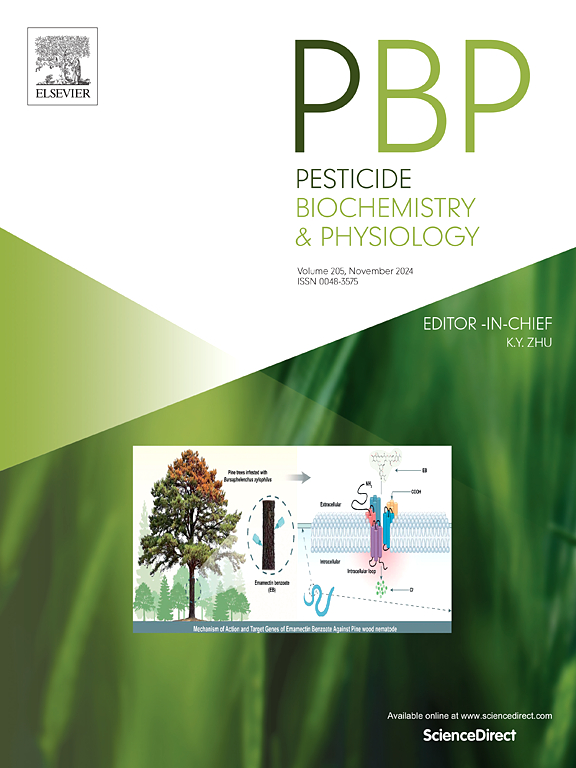Priming enhances tolerance of Fusarium graminearum to triazole
IF 4.2
1区 农林科学
Q2 BIOCHEMISTRY & MOLECULAR BIOLOGY
引用次数: 0
Abstract
Organisms exposed to environmental stimuli can develop “memory” of those experiences, a phenomenon known as priming, which allows them to better adapt to subsequent stimuli. Growing evidence has shown that fungi can “remember” past encounters, but the priming effect remains poorly understood in phytopathogenic fungi. In this study, we examined the priming effect in Fusarium graminearum, the causative agent of Fusarium head blight (FHB), by culturing its conidia in the presence of a median effective concentration (EC50) of triazole fungicide. We observed that primed conidia exhibited significantly higher germination rates and longer hyphal length than unprimed conidia when exposed to double EC50 concentration of triazole. The triazole priming effect in F. graminearum was retained in conidia for an extended period but was not stably heritable. Further investigations revealed that this priming effect was linked to increased over-expression of the fungicide target genes (FgCYP51s) above the level seen in non-primed F. graminearum. This study reveals that F. graminearum develops adaptive resistance following treatment with triazole fungicides, and elucidates the mechanism behind priming, which is regulated by the transcription factor FgSR. This regulation leads to the upregulation of FgCYP51 expression, thereby mediating the observed adaptive resistance. This provides a theoretical basis for understanding the development of resistance in pathogens and offers relevant guidance for the use of triazole fungicides in the control of FHB.

求助全文
约1分钟内获得全文
求助全文
来源期刊
CiteScore
7.00
自引率
8.50%
发文量
238
审稿时长
4.2 months
期刊介绍:
Pesticide Biochemistry and Physiology publishes original scientific articles pertaining to the mode of action of plant protection agents such as insecticides, fungicides, herbicides, and similar compounds, including nonlethal pest control agents, biosynthesis of pheromones, hormones, and plant resistance agents. Manuscripts may include a biochemical, physiological, or molecular study for an understanding of comparative toxicology or selective toxicity of both target and nontarget organisms. Particular interest will be given to studies on the molecular biology of pest control, toxicology, and pesticide resistance.
Research Areas Emphasized Include the Biochemistry and Physiology of:
• Comparative toxicity
• Mode of action
• Pathophysiology
• Plant growth regulators
• Resistance
• Other effects of pesticides on both parasites and hosts.

 求助内容:
求助内容: 应助结果提醒方式:
应助结果提醒方式:


